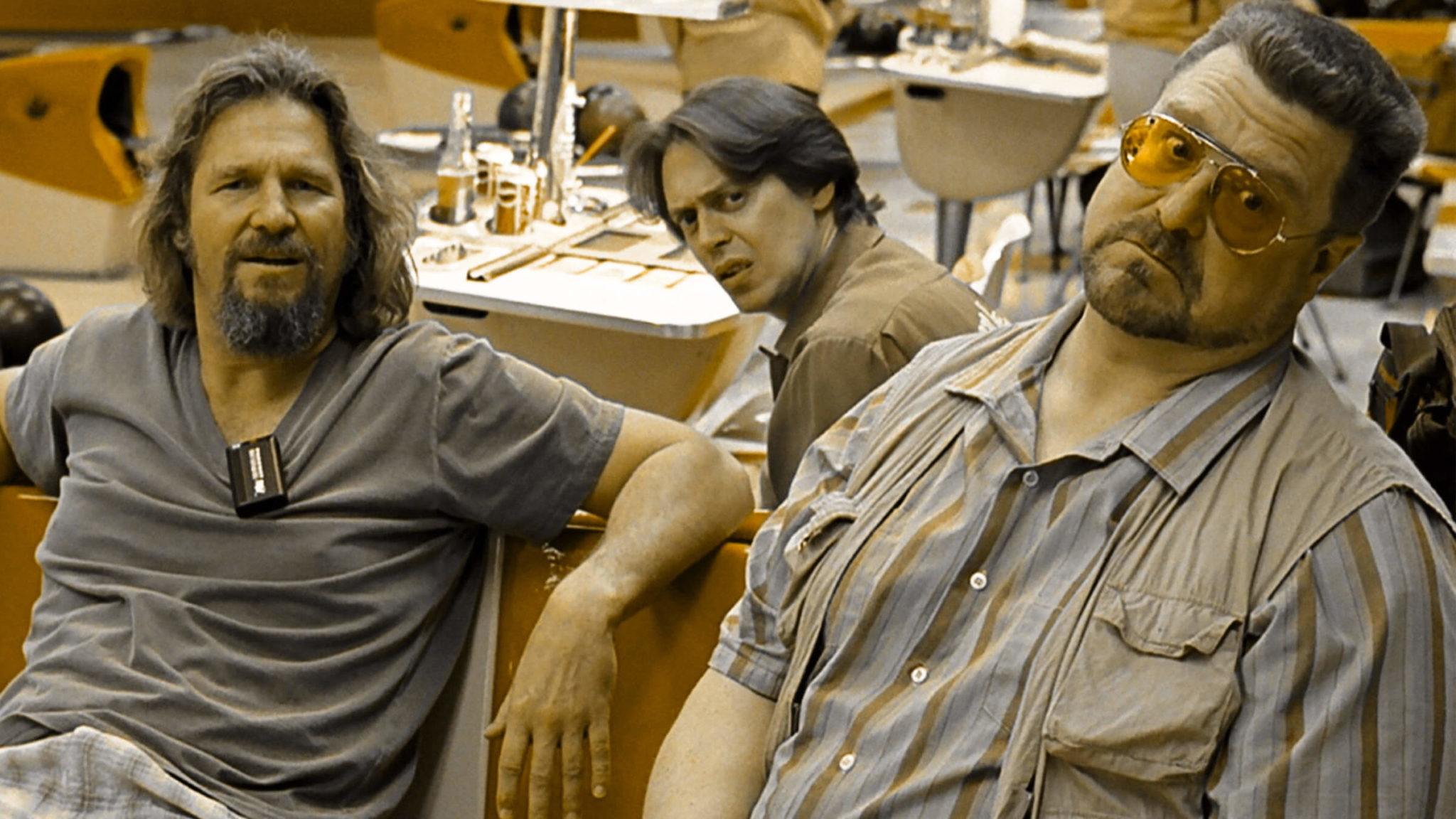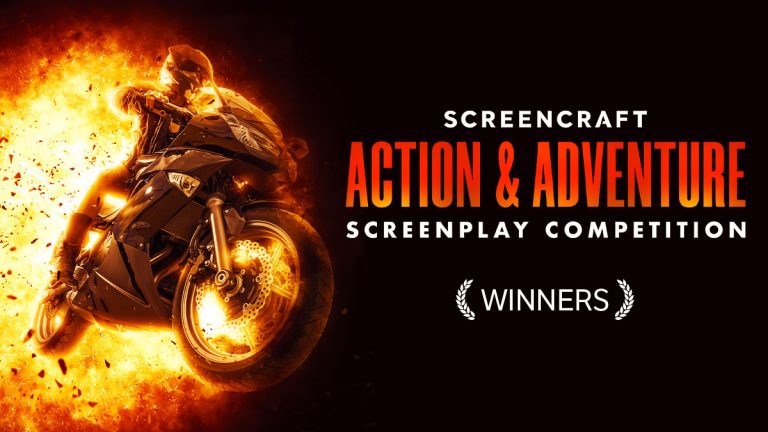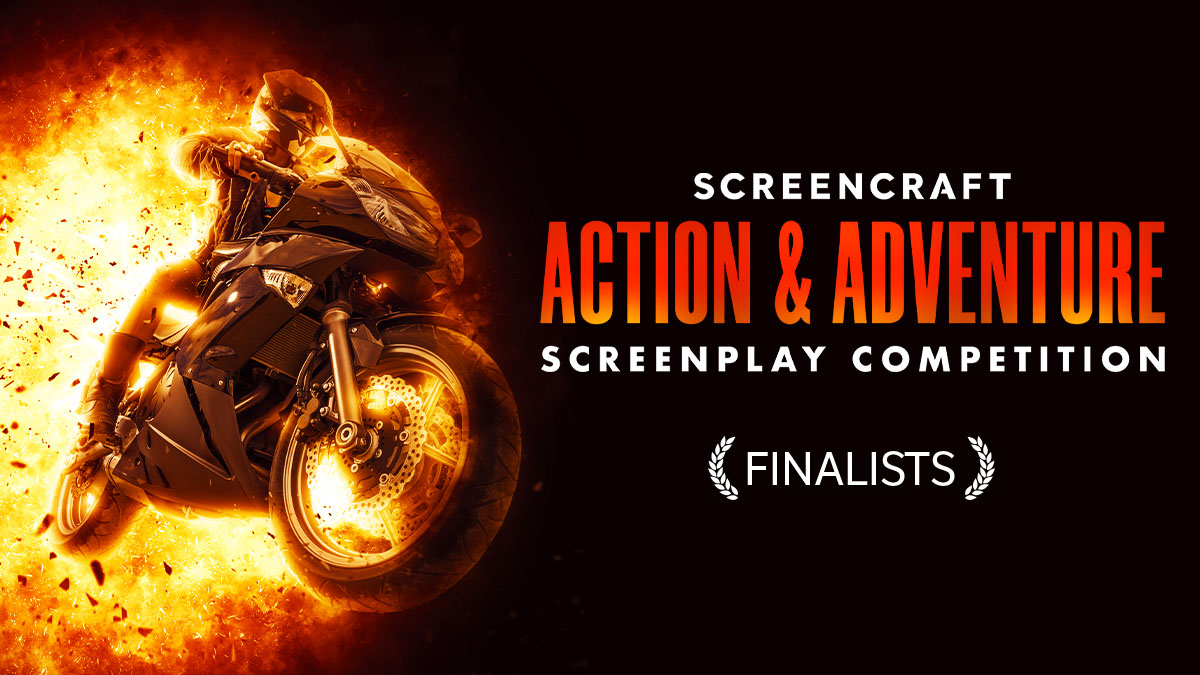How Derek Kolstad Wrote Action-Packed Fight Scenes in John Wick

You already know the name. John Wick is not a man to be trifled with. Of course, there’s a lot that people will say to oversimplify the story — including that it’s just a man killing people for murdering his dog. But while John Wick’s dog Moose is important, there’s more to it than that.
John himself is an entity known throughout the criminal world, a trained assassin of the highest order. As such, when you fight him, you’re fighting a professional. It’s hard to get that kind of thing across on screen though, right? So, the writer of John Wick, Derek Kolstad, had to be very specific about his approach.
If you’re curious how one of the best “Dude With A Problem” action thrillers became a cinematic staple, stay tuned: the writing in the fight scenes had a lot to do with it.
Precision and Accuracy
One thing about fight scenes is that they have to be choreographed to look real. But where does the choreographing start? In your writing. In John Wick, Derek Kolstad went a step further than a lot of other writers. While some screenwriters resort to language that covers several moments at once, Kolstad writes with each moment in his mind’s eye as a separate occurrence.
When it’s put to paper, you see John’s actions occur beat by beat, image by image, in a way that often splits sentences to emphasize the beginning and end of each new action. Cause and effect are represented precisely and accurately. Read the sample below from Page 23 to get a feel for the rhythm of his very precise action writing:
Download the script!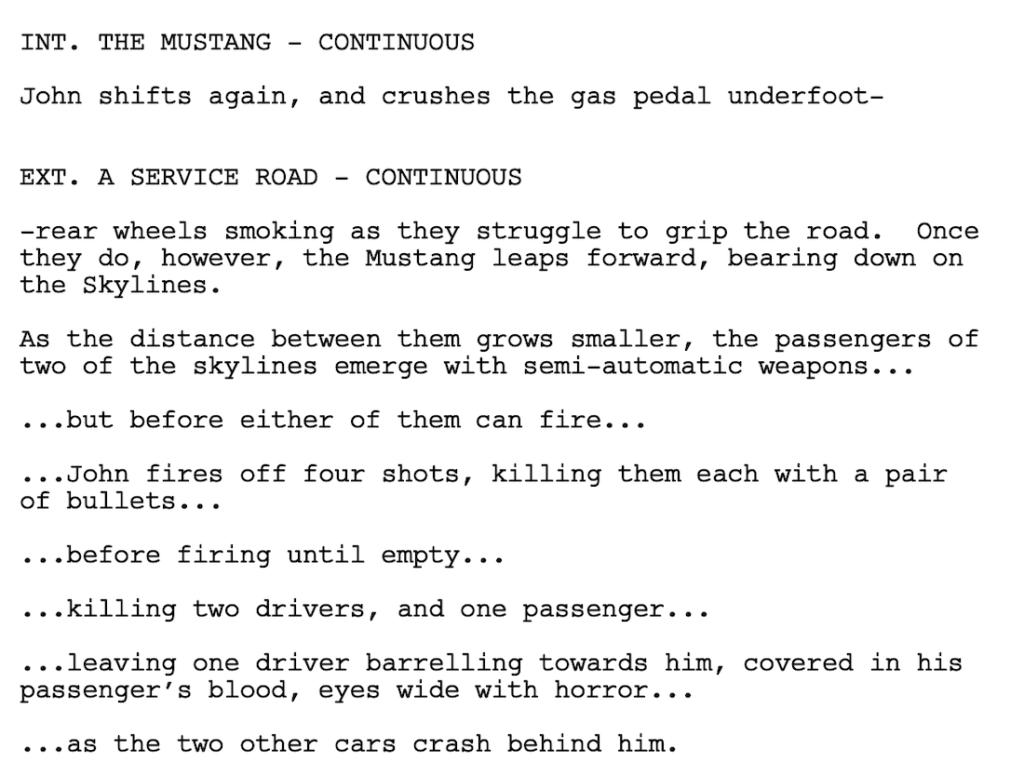 It’s not just here, either. Whether it’s with ellipses or dashes, a lot of action lines are split up to represent both sides of the fight. You can see the same thing throughout the script, such as we see on Page 96:
It’s not just here, either. Whether it’s with ellipses or dashes, a lot of action lines are split up to represent both sides of the fight. You can see the same thing throughout the script, such as we see on Page 96:
 As you see, each fight sequence is a give and take: first, an action line begins when a punch is thrown; then, the next action line would be someone’s face getting bloodied by the blow. It’s a tit-for-tat, play-by-play approach that someone might liken to a sports commentator. That is, if there was a sport that involved gunfighting and martial arts combined. Thankfully, I don’t know of any sport like that! With that element of precision and accuracy, there’s no mistaking who gets hit by whom. Each action is accounted for, which makes the narrative feel fuller, more action-packed, and more satisfying every time John downs another crony.
As you see, each fight sequence is a give and take: first, an action line begins when a punch is thrown; then, the next action line would be someone’s face getting bloodied by the blow. It’s a tit-for-tat, play-by-play approach that someone might liken to a sports commentator. That is, if there was a sport that involved gunfighting and martial arts combined. Thankfully, I don’t know of any sport like that! With that element of precision and accuracy, there’s no mistaking who gets hit by whom. Each action is accounted for, which makes the narrative feel fuller, more action-packed, and more satisfying every time John downs another crony.
Emotional and Visual Commentary
It’s also important to note that every time there’s action afoot, Kolstad still uses that as an opportunity to get visual or to get emotional. In the following example, Kolstad informs the delivery of John’s battle cry as he takes down a bodyguard:
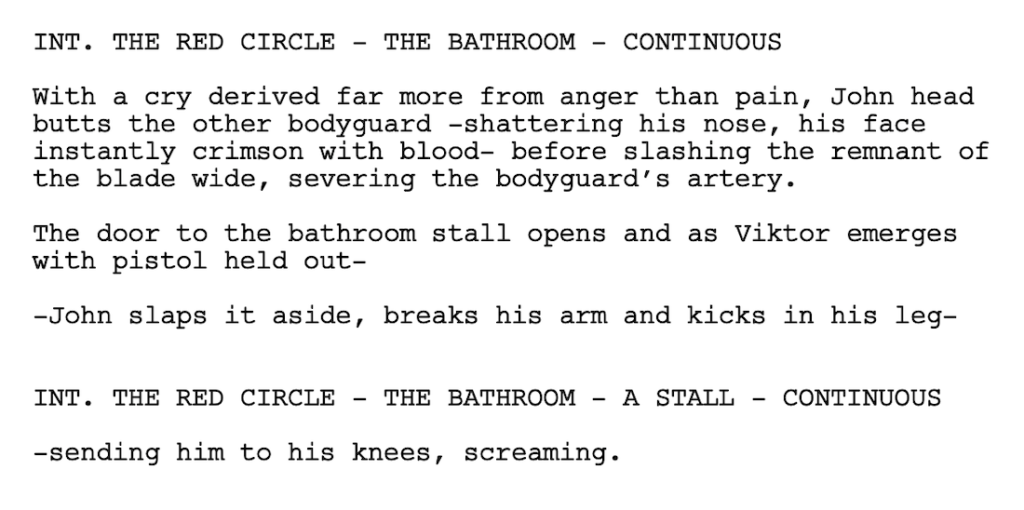 Make no mistake: this is an emotional commentary. There are plenty of these in the narrative, but Kolstad fits them alongside something to deliver or something visual (like a scream or a cry). This action is infused with emotional energy that bleeds into the scene. Speaking of bleeding, there’s also a distinct way of telling us we see blood on a man’s face: it’s “instantly crimson.” More visual commentary is seen when he describes John Wick as “soaked to the bone”, or the following examples:
Make no mistake: this is an emotional commentary. There are plenty of these in the narrative, but Kolstad fits them alongside something to deliver or something visual (like a scream or a cry). This action is infused with emotional energy that bleeds into the scene. Speaking of bleeding, there’s also a distinct way of telling us we see blood on a man’s face: it’s “instantly crimson.” More visual commentary is seen when he describes John Wick as “soaked to the bone”, or the following examples:
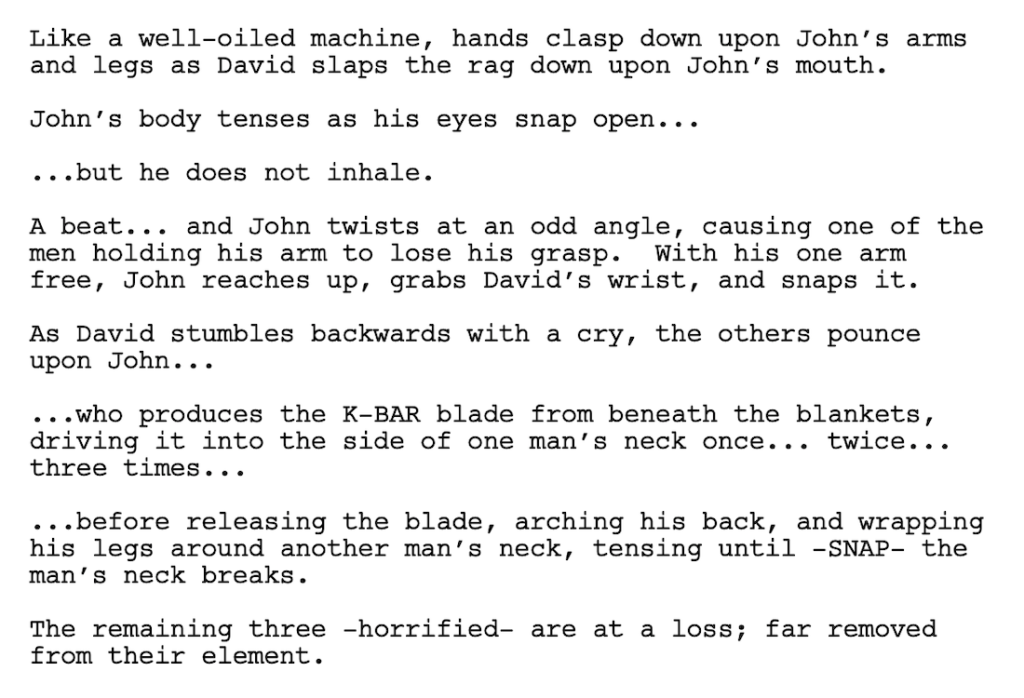 Kolstad compares David’s “well-rehearsed” attack to a “well-oiled machine,” again informing delivery — and when the three remaining attackers see David’s fate, they are described as “far removed from their element.” That emotional commentary shows us just how afraid these criminals are.
Kolstad compares David’s “well-rehearsed” attack to a “well-oiled machine,” again informing delivery — and when the three remaining attackers see David’s fate, they are described as “far removed from their element.” That emotional commentary shows us just how afraid these criminals are.
Conclusion
It’s not an overly complicated approach, but it is one that requires great attention. Writing something as beautifully orchestrated as John Wick requires a writer who thinks about things step-by-step. If you can think precisely, while still infusing the action with emotion, you can bring about something far more satisfying than your run-of-the-mill action thriller.
You can come up with a script as satisfying as the legendary John Wick. Get practicing, and in no time, you’ll be killing it. Pun intended.
 David Wayne Young is an independent film producer and screenwriter with years of experience in story analysis, even providing coverage for multiple international screenwriting competitions. David's obsessions include weird fiction and cosmic horror, and he's formally trained in the art of tasting and preparing gourmet coffee in various worldly traditions, from Turkish coffee to hand-tamped espresso — all enjoyed while writing, of course.
David Wayne Young is an independent film producer and screenwriter with years of experience in story analysis, even providing coverage for multiple international screenwriting competitions. David's obsessions include weird fiction and cosmic horror, and he's formally trained in the art of tasting and preparing gourmet coffee in various worldly traditions, from Turkish coffee to hand-tamped espresso — all enjoyed while writing, of course.
Get Our Screenwriting Newsletter!
Get weekly writing inspiration delivered to your inbox - including industry news, popular articles, and more!











